Competitive Advantage
Achieving and maintaining a competitive advantage requires deep analysis of market changes and a robust business strategy. Vivaldi works closely with clients to develop differentiated offers and innovative business models that align with customer needs and deliver value.
Competitive Strategy
Our competitive strategy framework identifies where your company stands in the market, clarifies strategic goals, and maps pathways to sustainable growth. We combine competitive insights with competitive intelligence to spot opportunities, mitigate threats, and strengthen your competitive edge.
Business Strategy
Vivaldi integrates competitive positioning into a broader business strategy that balances short-term wins with long-term success. By analyzing market context, market share, and capabilities, we design solutions that drive profitability and operational efficiency.
Learn more about our Growth Strategy expertise.
Strategic Planning
Effective strategic planning goes beyond forecasts. We leverage scenario planning and analysis to help organizationsadapt to market shifts while maintaining alignment with their strategic goals. This holistic approach ensures agility and resilience.
Strategy Consulting
Our strategy consulting engagements include market entry, cost leadership, and differentiation strategies. We help clients identify resources, manage costs, and create pathways to growth in competitive industries.
Explore our Business Model Innovation capabilities.
Competitive Intelligence
Vivaldi applies advanced competitive intelligence methods to monitor competitors, analyze market changes, and uncover hidden opportunities. This intelligence supports maintaining an advantage over time.
Competitive Insights
Our competitive insights process combines expertise with data to pinpoint white space in the marketplace. We help clients tailor go to market strategies to capture market share and strengthen positioning.
Competitive Positioning
Strong competitive positioning means aligning your brand promise with customer needs and delivering distinctive value. Vivaldi guides companies in refining their offers to build competitive advantage and expand in new markets.
Consulting Services
Vivaldi’s consulting services cover a wide range of industry sectors, providing expert support for organizations facing disruptive market shifts and competitive pressures. We offer tailored engagements that drive growth and lasting differentiation.
Strategy Consulting Services
Our strategy consulting services bring together senior advisors, deep industry knowledge, and innovative thinking. Each engagement is led by a senior partner who ensures strategies are actionable, measurable, and tied to clear business outcomes.
Go To Market
Designing an effective go to market strategy requires deep understanding of the competitive landscape and the flexibility to adapt to market changes. Vivaldi ensures your launch plans and channel strategies resonate with customers.
Expert Support
With Vivaldi, you gain expert support from a team that knows how to navigate challenges in dynamic markets. We leverage proven frameworks to identify opportunities, allocate resources, and maintain focus on your strategic goals.
Ready to strengthen your market position? Contact Vivaldi to discuss how our competitive strategy consulting can transform your approach and deliver results.






